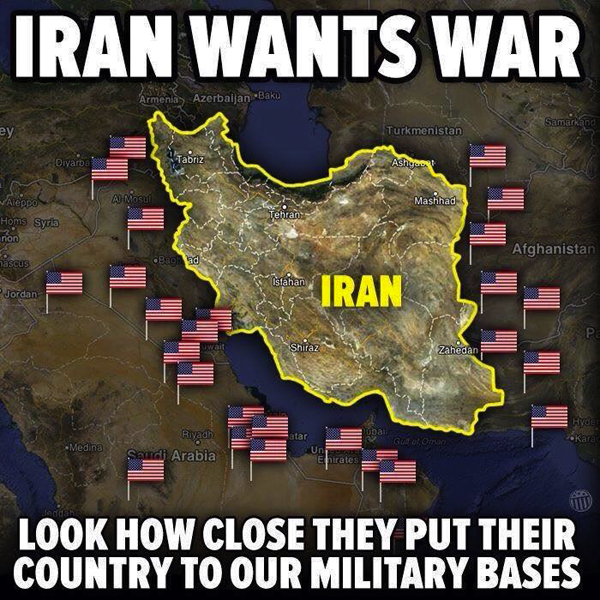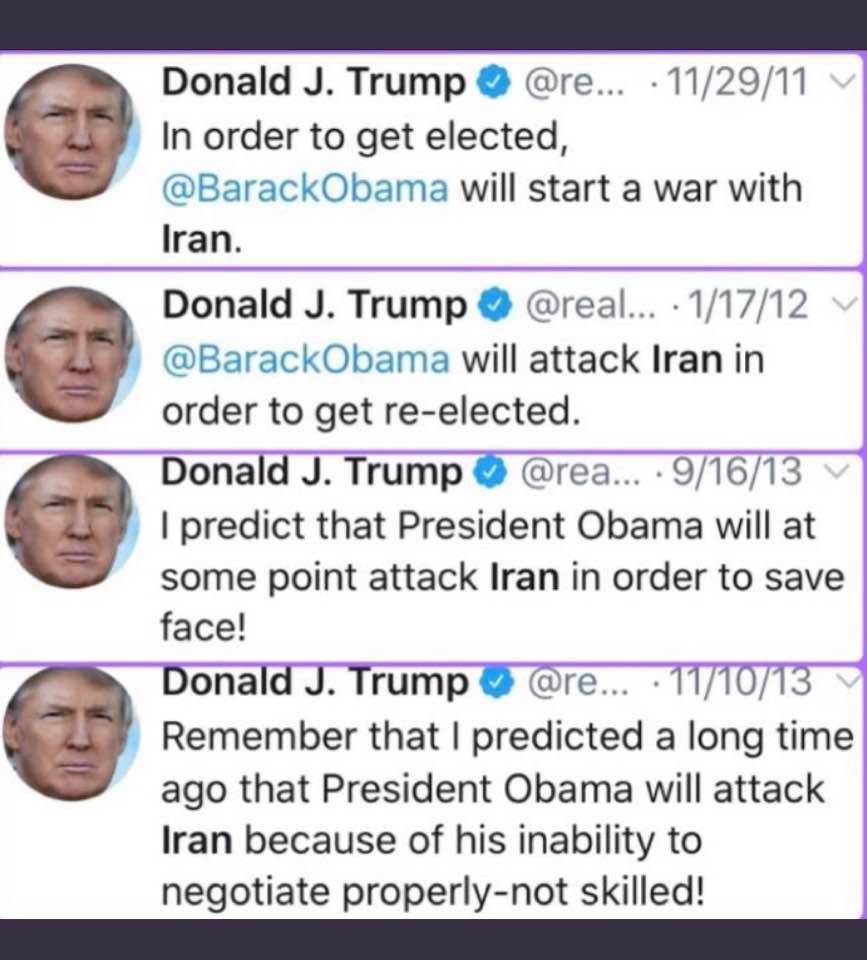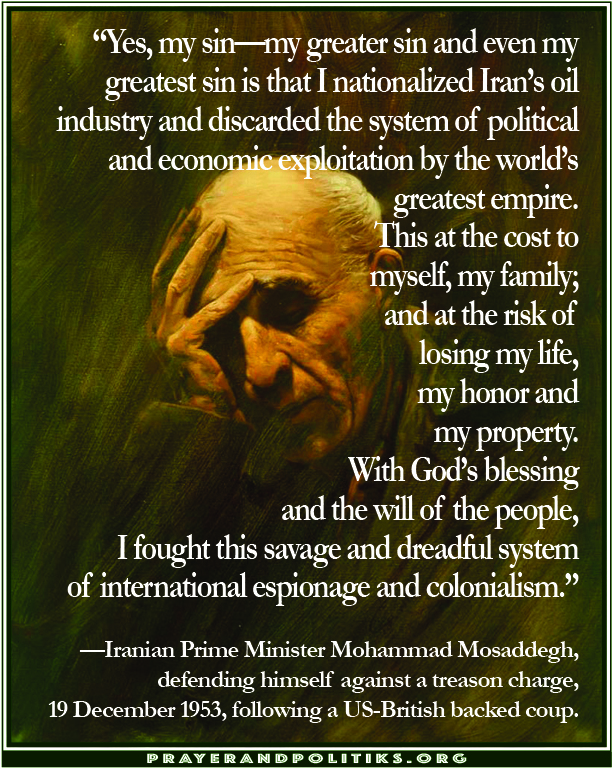by Ken Sehested
“The [US] rationale is embarrassingly circular—we must remain in
the Middle East to protect against terrorists who hate America
because we are in the Middle East.”
—Jeff Faux, “Why Are We in the Middle East?”
The US has been itching for a brawl with Iran for 40 years, ever since US embassy personnel in Tehran were taken hostage in 1979. Now, with the assassination of one of Iran’s top military and political leaders, General Qasem Soleimani, along with top Iraqi military figure Abu Mahdi al-Muhandis, the Trump administration may choose to  scratch.
scratch.
The results could be catastrophic. This standoff has all the telltale signs of a street melee, when taunting leads to shoving, shoving leads to punches, then out come the weapons. In this case, the weapons would be million dollar missiles.
Soleimani’s job description was a combination of special forces commander, CIA director, and secretary of state. Can you imagine our reaction if Iran assassinated one of such stature in our government?
The US has legitimate grievances against Iran. You need not wink at Iranian foreign policy to question US belligerence. And before you assess our current hostilities, here are a few things you need to know about the history of relations between the US and Iran.
1. Few US citizens know that in 1953 the US Central Intelligence Agency planned, funded, and directed the overthrow of the democratically-elected government of Iran.
It then installed a dictator whose brutal reign lasted until his overthrow in 1979 during the Iranian revolution. (We remember the US hostages taken, but not the triggering cause.)
2. During the 1980s war between Iraq and Iran (with fatalities in the hundreds of thousands), the US removed Iraq from its “state sponsors of terrorism” list in order to expedite weapons transfers to the country—then our preferred ally in the region—as well as providing crucial military intelligence to Saddam Hussein. Among the weapons sold to Iraq were ingredients for Hussein’s chemical weapons which he used against Iran and then on his own Kurdish minority population. The US offered not even a whisper of complaint afterwards—until a decade later, when Iraq resumed its rogue-state status in America’s shifting Middle East crosshairs.
3. Also during the ‘80s, in President Reagan’s second term, high ranking White House officials undertook a secret deal to sell weapons to Iran (which was illegal by act of Congress) to fund the US-backed Contra war (also illegal by  act of Congress) aimed at displacing the democratically elected Nicaraguan government.
act of Congress) aimed at displacing the democratically elected Nicaraguan government.
Left: Iranian schoolgirls
4. In 1988 the US Navy shot down an Iranian passenger plane, flying in Iranian airspace, killing all 290 passengers and crew. President Reagan admitted “regrets,” saying the Navy ship’s commander thought it was an Iranian military jet. Defending the action, US Admiral William Crowe, Chairman of the Joint Chiefs of Staff, “emphasized from the outset that committing military units to the Persian Gulf mission would involve risks and uncertainties.'' Then Vice President George H.W. Bush said “I will never apologize for the United States—I don’t care what the facts are. . . . I’m not an apologize-for-America kind of guy.”
are. . . . I’m not an apologize-for-America kind of guy.”
5. Much has been made of Iran’s ability to launch cyber attacks on the US government and civilian infrastructure.
No one seems to be pointing out that the US (with Israeli assistance) launched the world’s first cyber assault against . . . you guessed it: Iran, with the “Stuxnet” malicious computer worm, causing significant damage to Iran’s nuclear energy program. It was first discovered in 2010 and had been launched as early as 2005.
6. The assassination of General Soleimani effectively crushed youth-led, civil society protests emerging in Iran, in Iraq, and in Lebanon against public corruption and government intransigence. Soleimani’s funeral brought literally millions of people onto Tehran’s streets not just for the expression of grief but also as an outcry against US interference in their country. The fireball that descended on Soleimani’s caravan dramatically cauterized public dissent.
7. On top of these, imagine yourself as an Iranian, knowing that the US has more than two dozen (that we know of) military bases in 10 countries surrounding your country, plus a naval carrier group stationed a few miles off your shoreline.
You know that Trump unilaterally withdrew from an effective treaty suppressing your country’s nuclear weapon capability. You know that the US has bombed 14 majority-Muslim countries since 1980. And you likely know the US already has over 60,000 troops in the Middle East, with more on the way.
 As I write, more than a dozen Iranian ballistic missiles have targeted two Iraqi military bases hosting US troops. It will be a long night, and likely more bloody tomorrows. The quote that first comes to mind is among the briefest: “Hatred bounces” (e.e. cummings).
As I write, more than a dozen Iranian ballistic missiles have targeted two Iraqi military bases hosting US troops. It will be a long night, and likely more bloody tomorrows. The quote that first comes to mind is among the briefest: “Hatred bounces” (e.e. cummings).
Not quite as precise, but more vivid, is this: “. . . they are a law unto themselves and promote their own honor. Their own strength is their god.” (Habakkuk 1:7b, 11c)
# # #
Ken Sehested is curator of prayerandpolitiks.org, an online journal at the intersection of spiritual formation and prophetic action. He was the founding co-pastor of Circle of Mercy Congregation in Asheville, NC. In 2007 the congregation approved a statement titled “We say no: A Christian statement in opposition to war with Iran.” When US-Iran tensions rose again in 2012, the congregation reaffirmed and reissued its earlier statement—and likely will be again, in the coming days.
Also see:
• “US citizens should be very wary of any US rationale for an attack on Iran”
• “Worried about increasing US-Iran tensions? You should be”
• “The latest US-Iran dust-up ; Reckless baiting . . . again”

